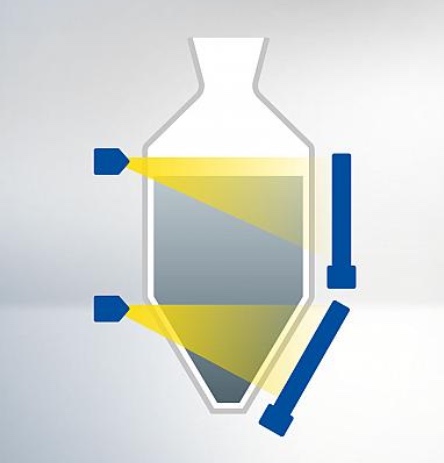May-2025
Water treatment: Saving water to save the planet
Case studies of using treatment technologies to improve sustainability in water-intensive industries.
Andreina Graham
Solenis
Viewed : 209
Article Summary
Climate change, economic development and population growth have all contributed to the limited availability of water resources this century. Drought and water scarcity are two major challenges affecting water security among all socioeconomic sectors of society. Currently, as much as 25% of the global population lives in countries facing severe water stress.
The future will probably be even more challenging, considering that more than 30% of industrial operations, globally, are expected to experience water stress by 2050. In addition to the challenges wrought by drought and water scarcity, poor water stewardship and mismanagement can further restrict access to water.
The growing lack of available water has accentuated the concern in water-intensive industries such as food, paper, chemicals and refining. As a result, many companies have followed the UN’s Sustainable Development Goals and initiated action plans for 2030 and 2050 to achieve environmental sustainability.
With appropriate chemistry, equipment and guidance provided by speciality chemical suppliers and water treatment companies like Solenis, water-intensive industrial operations can achieve their sustainability goals on multiple levels, including reducing chemical and water consumption, reusing and recycling water, extending asset life and potentially even recycling raw materials.
These companies understand the importance of water treatment to industrial operations and know that chemical and equipment technologies play a vital role in achieving sustainability goals. The acceleration of global water scarcity highlights the need for water preservation and optimisation, reuse, recyclability and treatment to protect this increasingly threatened resource. Speciality chemical suppliers strive to support their customers in their efforts to achieve meaningful change and solve environmental issues around the world.
The development of new water treatment technologies that use efficient manufacturing practices and renewable raw materials support the reduction of carbon emissions, which is now more important than ever. Water treatment chemistries allow for the removal of impurities, contaminants and pollutants such as bacteria, viruses, harsh chemicals and heavy metals that pose risks to health and ecosystems.
The continuous development of innovative products and technologies for cooling water treatment is essential to increase cycles of concentration, thereby allowing maximum water reuse and reducing freshwater needs. In wastewater treatment processes, chemistries are critical to help remove pollutants and harmful substances before the water is released back into rivers, lakes or oceans.
The following case studies explore water treatment technology innovations used in refining, mineral processing and chemical processing that aim to improve sustainability and reduce environmental impact. By implementing advanced chemicals and equipment, these industries have decreased water and chemical consumption, lowered CO₂ emissions, and significantly increased water recycling. Each highlights how modern innovations are driving more efficient, environmentally friendly operations in water-intensive industries.
Use of coagulant for improved sustainability
A large petroleum refinery in a drought-stricken area in Europe has two 450 m3/hour wastewater treatment plants that discharge wastewater into the sea. Together, the treatment plants allow for half of the water to be recycled for cooling make-up and other applications.
The initial challenge at one of the plants was related to the use of an inorganic ferric-based coagulant in the dissolved air flotation unit. Continuous use of this at high dosages resulted in elevated corrosion rates, increased solids and increased precipitation of phosphates, leading to a nutrient imbalance in the biological reactor.
All these issues contributed to a significant water recycling challenge and increased the likelihood of exceeding discharge limits because of poor water quality. Upon partnering with Solenis to analyse the problem and evaluate solutions, the refinery operators implemented a new water treatment programme using an organic coagulant that not only solved the corrosion problem but also provided substantial benefits.
Coagulants, one of the most important wastewater treatment chemicals, are often implemented as a first step to reduce both organic matter and suspended solids. The selection of an appropriate coagulant for the application depends on multiple variables and is a critical decision; indeed, it is essential to ensuring proper unit performance, minimising sludge production, and supporting sustainability goals while lowering the overall environmental impact.
Implementing the new coagulant programme enabled the wastewater treatment plant to achieve excellent sludge separation and to improve water quality for reuse applications and effluent discharge (Figure 1). The programme provided energy savings of 113,880 KWh/year and water savings of 960,000 m3/year, and it reduced CO₂ emissions by 38.6 tonnes/year.
Chemical control package for environmentally friendly operation
Mineral processing operations consume large volumes of powder flocculants for water treatment and dewatering. Being able to dissolve granular flocculant formulations efficiently is a high priority here. Water and energy requirements are typically elevated, increasing the importance of a modular dissolving system to improve operational efficiency.
A mineral processing facility in Australia encountered difficulties controlling solid-liquid separation, and subsequently the required beaching angle, at its tailings storage facility. The mine site operators frequently overdosed flocculant because of fluctuations in slurry characteristics and feed rates, causing solids to build up at a faster rate.
Following the introduction of a suitable control package that involved real-time measurement, control algorithms and a proprietary flocculant make-down system, flocculant usage decreased from 700 to 200 kg/day, and makeup water usage decreased. With the upgraded modular dissolving system, mine operators were able to reduce CO₂ emissions by 65 tonnes/year and water usage by 18,250 m3/year
Reducing toxicity in cooling water blowdown
Azoles are versatile molecules used in a wide variety of industries ranging from pharmaceuticals and agrochemicals to chemical processing and oil refining. Within water treatment, these compounds are commonly used as corrosion inhibitors for copper and copper alloys even though they can contribute to water pollution by disrupting natural processes. That has led regulatory agencies to highlight the importance of monitoring and reducing azoles in water.
Add your rating:
Current Rating: 1

















